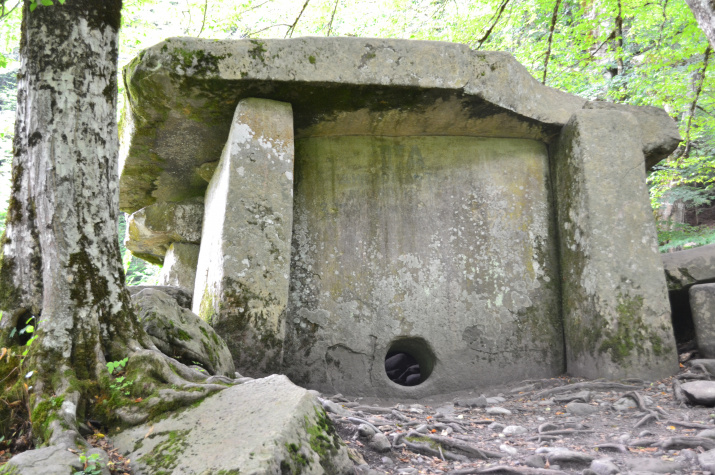The head of Adygeya supported the proposal of Russian Geographical Society (RGS) representatives on the necessity to establish the boundaries of protected zones of monuments.
Before everything else, it concerns the preservation of archeological objects and the surrounding landscape. For example, it is proposed to create a protection zone 50 meters around the dolmen from the border of the monument along the perimeter.
"Formerly, there were about 1.5 thousand dolmens in the republic. They have practically disappeared due to anthropological impact over the past 150 years and only two intact dolmens remain, two more were reconstructed by archaeologists in 2013 and 2015. Therefore, it is necessary to take care of the preservation of monuments, and the cultural-historical and landscape zone around them,” said Igor Ogay, the chairman of the regional branch of the Russian Geographical Society.
Also the subject of the archaeological monument preservation was discussed at the meeting of the Council at the head of the Republic of Adygeya on the development of civil society and human rights in the House of Government of Adygeya. The head of the republic, Murat Kumpilov, supported the proposal of the Russian Geographical Society and ordered to draft amendments and amend them into regional legislation.
"The cultural heritage of Adygeya is our wealth and at the same time a precious resource. Today, much is being done to preserve and use it competently. For example, this year the volunteer movement “Save the Roots” has been created in the republic, aimed at preserving unique monuments of history and nature, in particular Buxus colchica and dolmens. These are necessary and important steps to preserve our rich cultural and historical heritage," said Kumpilov.
Many of the identified monuments do not have a protected zone due to gaps in the legislation, and the structures are not marked on the maps. So, Igor Ogay provided some examples when whole dolmen complexes were destroyed because of this fact during major construction projects or gas pipeline laying. In order to protect each monument, a special examination and commission are required. And its work is worth tens of thousands of rubles. Amendments to the law will help to avoid spending and all archaeological structures will be protected automatically.
The head of Adygeya believes that the law enforcement agencies are not fighting enough with grave robbery. Many of the monuments are damaged, others are completely destroyed. He instructed cultural officials to establish effective interaction with the Ministry of Internal Affairs and in that way jointly protect monuments. Murat Kumpilov underlined that such objects should be considered in the same context as natural monuments, including the ancient Circassian gardens and Adyghe sacred groves.
Dolmens (from Breton, Taol maen – a stone table) are ancient funerary and religious buildings belonging to the category of megaliths - structures built of large stones. The name comes from the appearance of the usual for Europe structures - raised slabs on the stone supports, resembling a table. In Russia, there were more than 2 thousand dolmens. They were located along the Black Sea coast, in Sochi, Novorossiysk, Gelendzhik and Tuapse inland to the Laba River. Almost four intact dolmens and 1.5 thousand damaged ones were preserved in Adygeya.
Dolmens were destroyed to a greater extent during the Soviet years: some were plowed up, some were taken apart on the buildings, and some were destroyed. Now, according to experts, it is time to remember the values of these megaliths, otherwise Russia will lose them irretrievably. Dolmens in Adygeya are among the most ancient dolmens on the planet. According to archeologists, the oldest of them is 5,700 years old. The weight of structures reaches tens of tons. The largest dolmen groups of Adygeya are: the Bogatyr’s Glades - about 400 dolmens, the Kozhzhokhskiy dolmens - about 300 and the Deguaco-Dakhovsky - about 200 structures.
Thanks to the activities of the Department of Monuments Protection of the Republic and members of the regional branch of the Russian Geographical Society over the past ten years the number of identified historical monuments increased from 1574 (in 2008) to 3825 (in 2018) in Adygeya.

